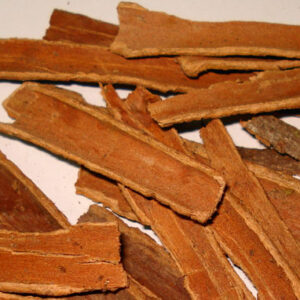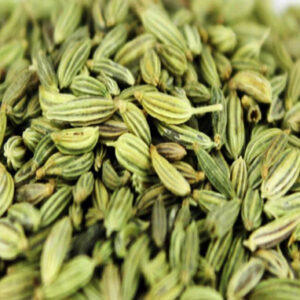
Edible or culinary ginger is the fat, knobby, aromatic rhizome of Zingiber officinale, a tender herbaceous perennial plant in the large ginger family (Zingiberaceae) native to humid, partly-shaded habitats in moist tropical and subtropical forests of Southeast Asia. Ginger is grown for the hot, pungent flavor of the rhizome which can be used fresh, dried, ground or preserved (in brine, vinegar or sugar syrup). It was introduced to northern Europe by the Romans (who got it from Arab traders), was one of the most popular spices in the Middle Ages, and is an integral component of many Asian cuisines today. In Asia, the fresh stems are also used in many dishes. Ginger adds a spicy punch to fruit salads, teas, curries, preserves, and baked goods – gingerbread, gingersnaps, and other spicy desserts. In addition to its culinary value, it is used medicinally for several ailments. It does interact with some medications, including the anticoagulant drug warfarin.
Other plants in this family used as spices include cardamom (Elettaria cardamomum), galangal (Alpinia galanga) and turmeric (Curcuma longa), while most of the other nearly 1,300 species in the family are grown primarily as ornamentals. It is not related to the wild gingers of the northern hemisphere (Asarum spp.) whose roots have similar aromatic properties but should not be consumed as they contain aristolochic acid, a compound associated with permanent kidney damage.


Also called ginger root (technically a misnomer, since it’s a rhizome, which is an underground stem, and not a root) this plant is now grown throughout the world in tropical climates. It is grown commercially in South and Southeast Asia (India, China, Nepal), tropical Africa, parts of Central America and the Caribbean, and Australia where it takes about 8-10 months from planting to harvest the crop. It is hardy only in USDA Zones 8 – 12 but can be grown in containers and moved indoors for the winter in colder climates where the season is too short for the rhizomes to mature.

The thick, warty, branched rhizomes have a corky, brown to golden outer skin that is very thin and easily abraded, so they should be handled carefully to avoid damage that could lead to spoilage. The interior is pale yellow with a spicy, almost lemony scent. When young the rhizomes are juicy and fleshy with a very mild taste, but become hotter, more fibrous and drier as they mature. The characteristic fragrance and flavor comes from volatile oils and non-volatile phenolic compounds including zingerone, shogaol, gingerol, and gingeridione.

Ginger plants grow shoots 3-4 feet tall from the rhizomes, gradually spreading outwards to eventually form a dense clump if not harvested. The shoots are actually pseudostems formed from a series of leaf sheaths wrapped tightly around one another. The blades of the medium green, alternate leaves are long and narrow (7 by ¾ inches), arranged in two ranks on each stem.

Container grown plants rarely flower and the blossoms are not particularly spectacular. Clumps need to be at least two years old before they will flower. The terminal inflorescence grows on a separate, leafless stem from the foliage stem. The dense, cone-shaped flower spikes are composed of a series of greenish or yellowish bracts with translucent margins. Cream to yellowish green flowers, each with a mauve or deep purple lip, protrude just beyond the green bracts. Culinary ginger flowers are usually sterile, rarely producing seed.
Culinary ginger is rarely offered as a potted plant since it isn’t particularly ornamental. However, ginger can be grown from rhizomes purchased at supermarkets or other food stores. Commercial ginger is often treated with a growth inhibitor to keep it from sprouting before use, but sometimes pieces – especially those marketed as organic – will begin to sprout. Plump pieces with many swollen buds at the end of the “fingers” are best. Buds that have started to turn green are even more likely to grow. The rhizomes can be planted whole or divided into pieces (being sure there are at least two eyes per section). Allow any cut pieces to dry for a few days in a warm, dry spot and callus over before planting. Rhizomes can be soaked overnight in warm water before planting. Place the rhizomes about an inch deep in warm soil (whether in a container or in the ground, ginger grows only when soil temperature is over 68ºF and grows best with soil temperatures around 77ºF) with the growth buds pointing upward. Water lightly until growth begins. It may take a few weeks for shoots to show, as the plant has to develop roots first. Once leaves develop keep the soil evenly moist but not soggy. Some growers prefer to only partially fill the containers with growing medium before planting the rhizomes and then add additional growing medium in two increments a few months apart to encourage longer, larger rhizomes. In ground plants can be hilled up periodically to encourage larger rhizomes, too, but this is not necessary.







